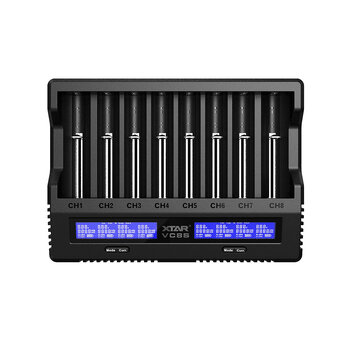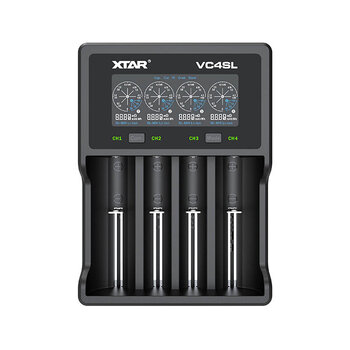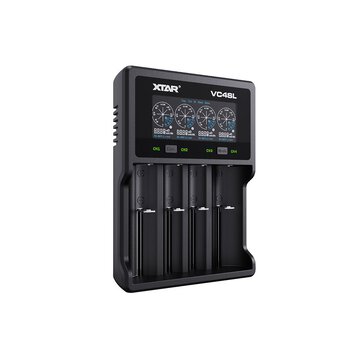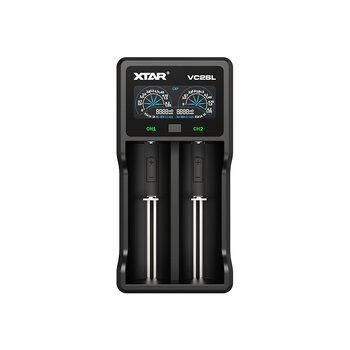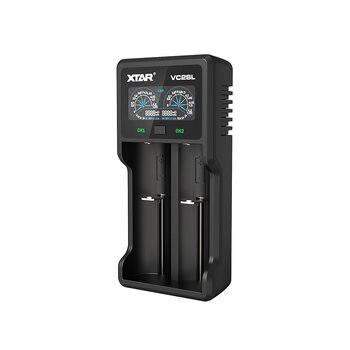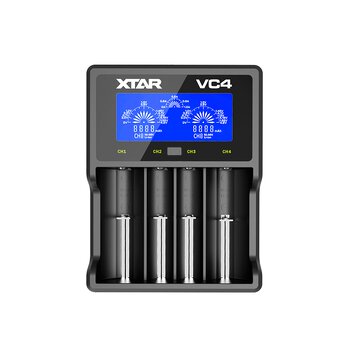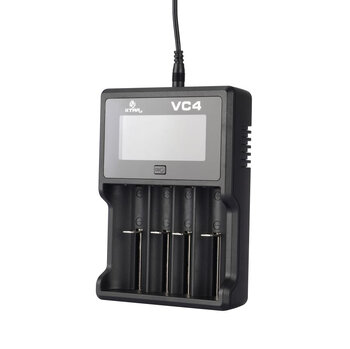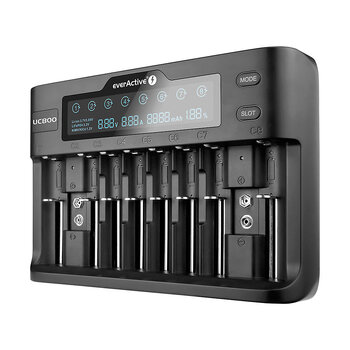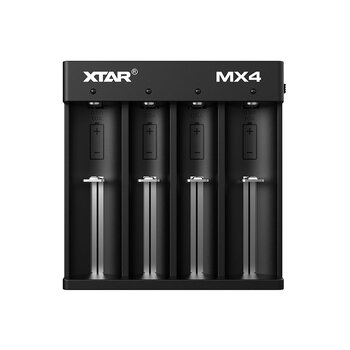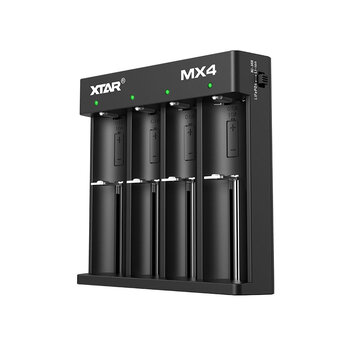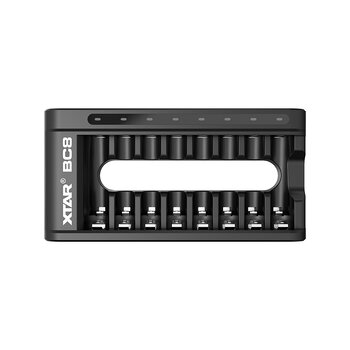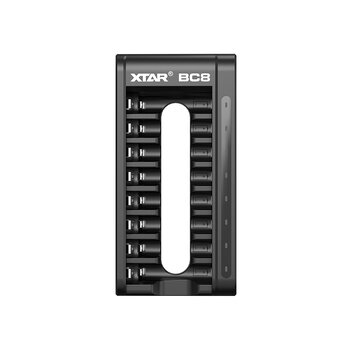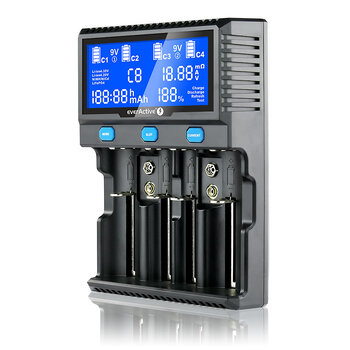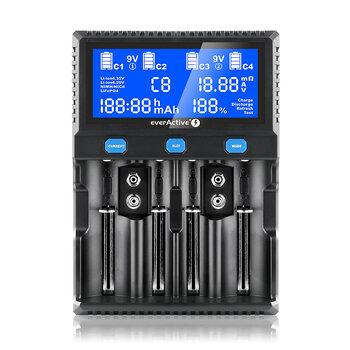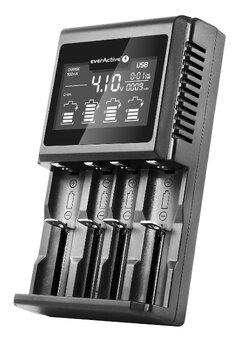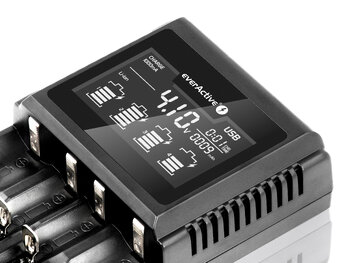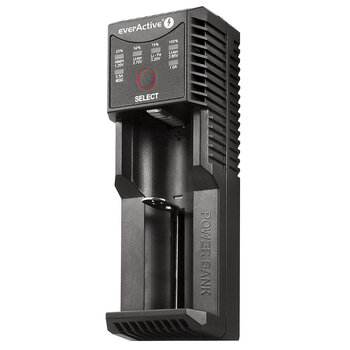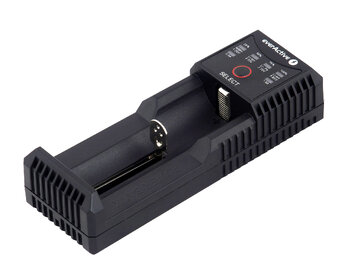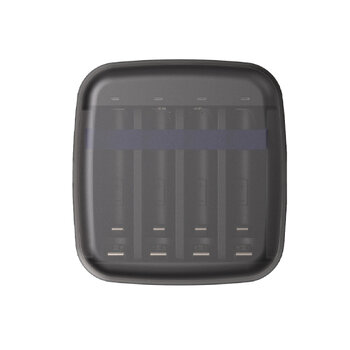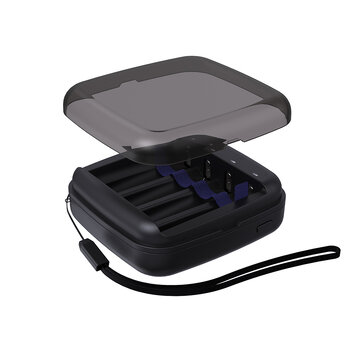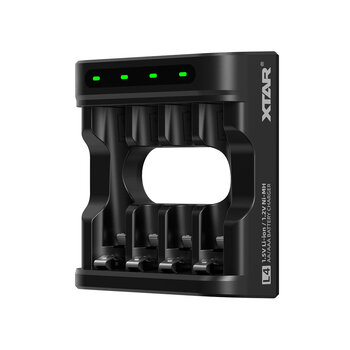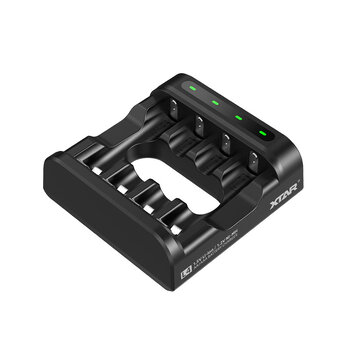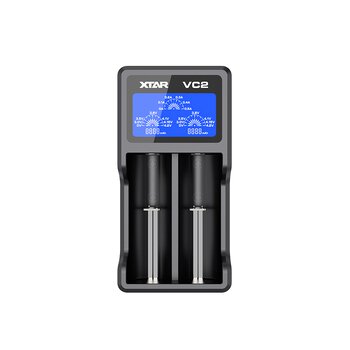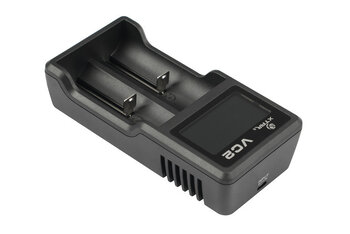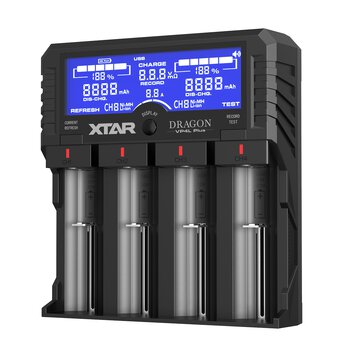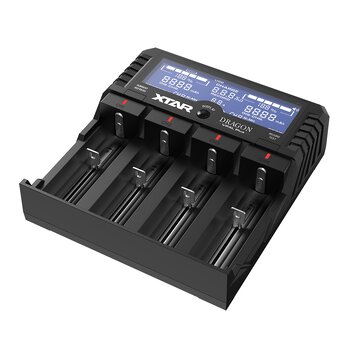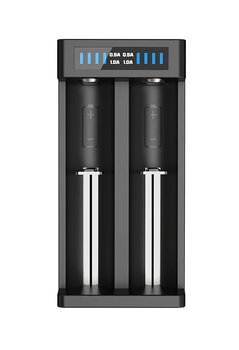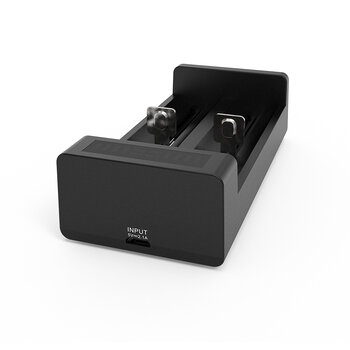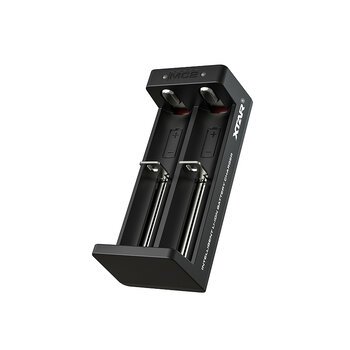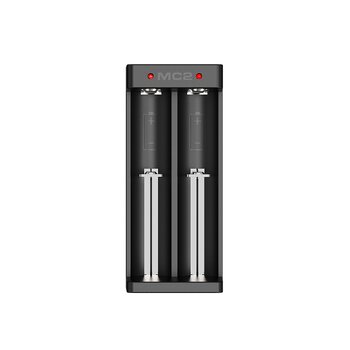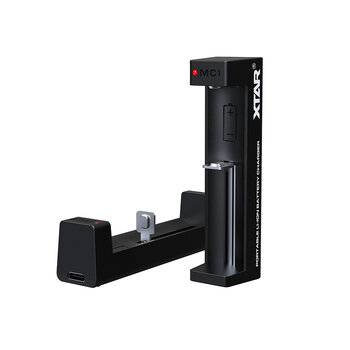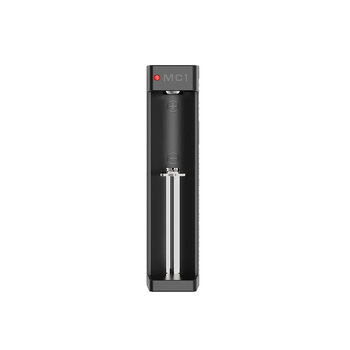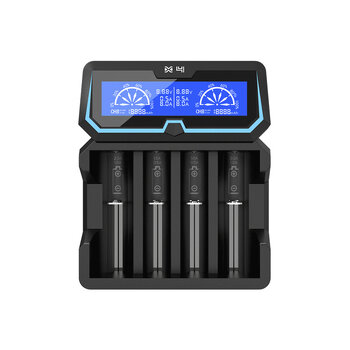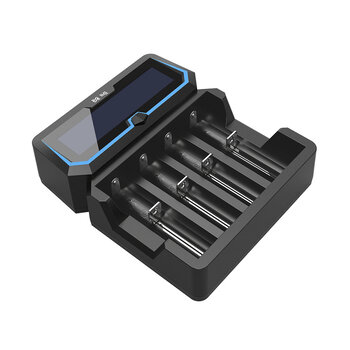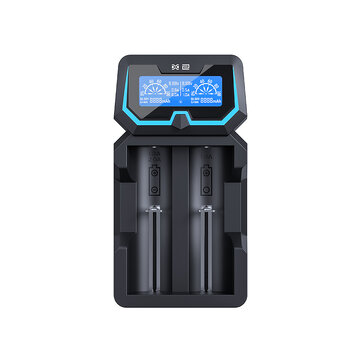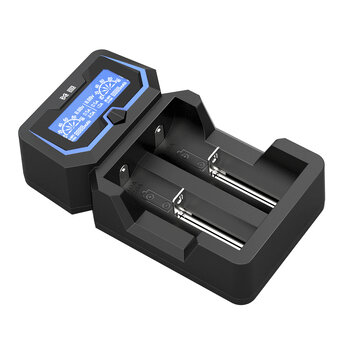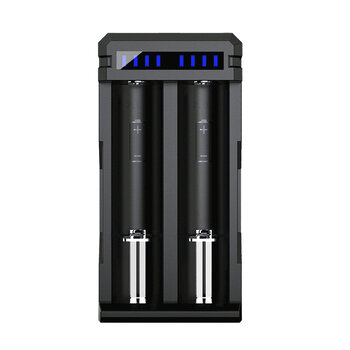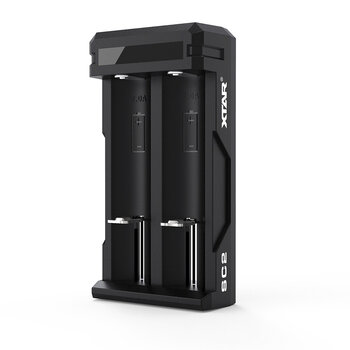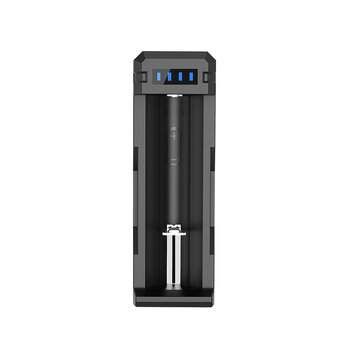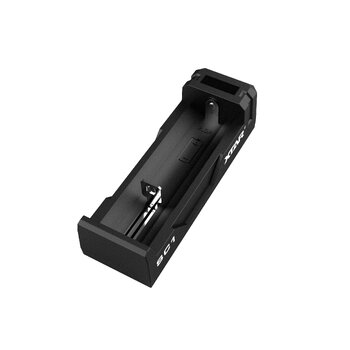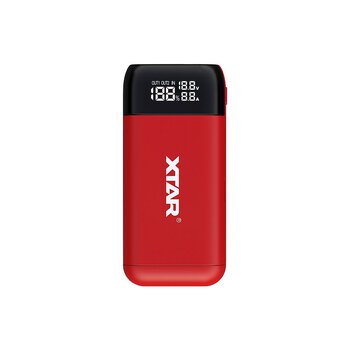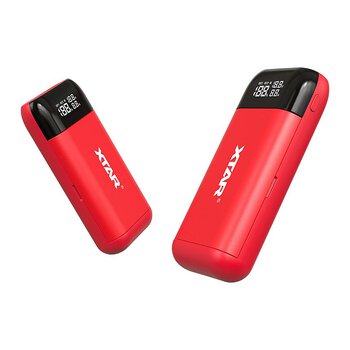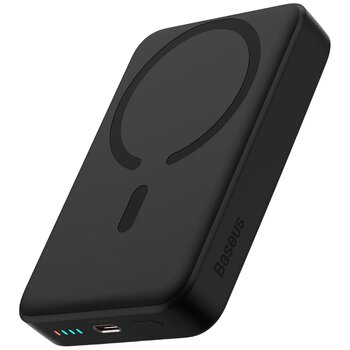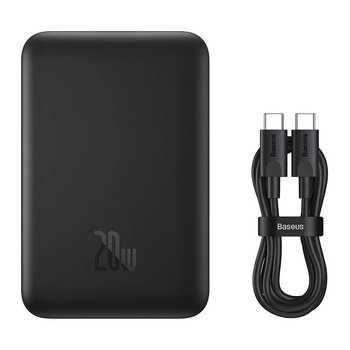Professional eight-channel processor charger
Xtar VC8S
for Li-ion and Ni-MH batteries in sizes 18650, 20700/21700, AA, AAA and others...
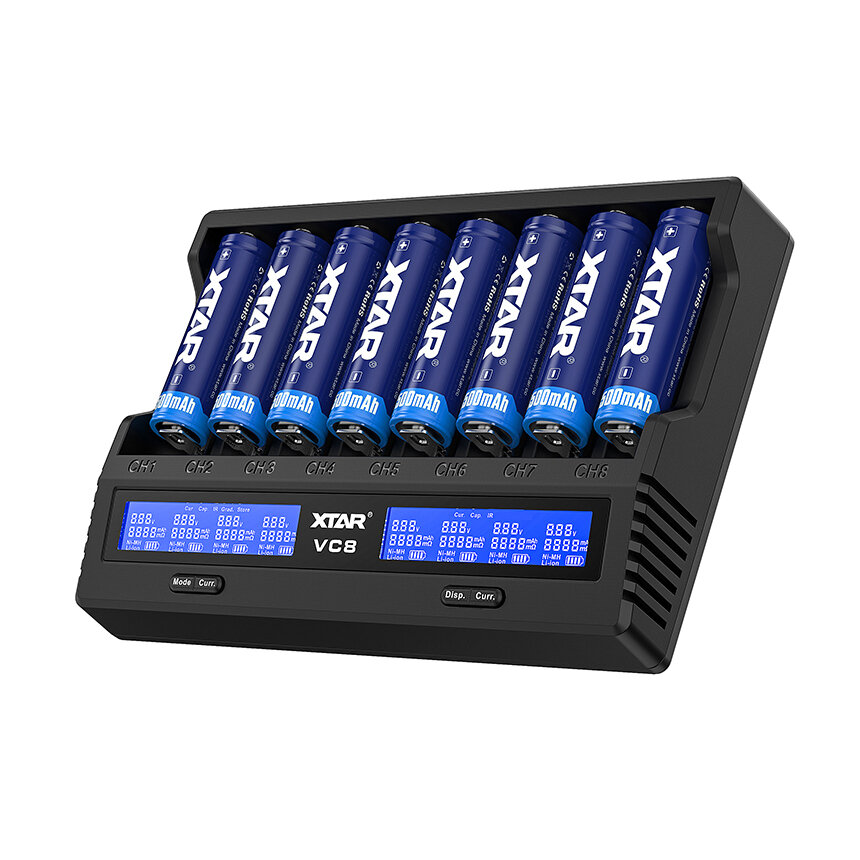
Key features:
- charging Li-ion batteries with a three-stage processor-controlled TC/CC/CV charging process
- charging Ni-MH batteries using 0ΔV and -ΔV methods
- eight independent charging channels
- adjustable charging current
- LCD display informing about cell voltage and charging current as well as internal resistance
- Measurement of capacitance (from discharge)
- Storage mode - for storing batteries
- Deeply discharged cell reactivation function
- Protection: short-circuit, against reverse battery insertion, against overcharging, against using too high charging current
See full specifications.
| Xtar is a renowned manufacturer of high quality chargers for Li-ion batteries, flashlights and Li-ion batteries. Xtar products are sold in over 120 countries, including min. in the USA, Germany, Japan and Russia. For the production of chargers , Xtar uses the highest quality materials - from housing material to efficient electronics. All Xtar chargers have the CE certification required in the European markets. |

The VC8S is an upgrade to the reputable and popular VC8. VC8S is a charger with a three-stage charging process TC/CC/CV for Li-ion cells and 0ΔV and -ΔV for Ni-MH batteries. It charges 1-8 Li-ion 3.6 / 3.7V and Ni-MH cells of any capacity in sizes AAA/R03, AA/R6, 10440, 14500, 14650, 16340, 17500, 17670, 18350, 18500, 18650, 18700,18700, 20700, 21700 - also with protection, 22650, 25500, 26650. In the two extreme channels it is possible to charge batteries with low internal resistance even with a current of 3A (only 2 cell).
The maximum charging current is 3A and is available only for the two extreme channels and only when the middle channels are not used - the maximum charger is able to charge 2 batteries at the same time. If 4 batteries are placed, the maximum charging current will be 2A. If 8 cells are placed, the maximum charging current will be 1A. This is another difference from the regular VC8. The current efficiency has improved significantly and eight batteries charged simultaneously with 1A current, should satisfy even those more demanding.


The backlit LCD display of the Xtar VC8S charger shows real-time information about the charger's operating status: voltage of the batteries being charged, charging current, charge used to charge the cells, internal resistance of the cells, indicates possible errors and informs the completion of charging. The type of information displayed can be changed at any time by pressing the "disp" or mode button. Switching between charging modes is possible by holding down the mode / displ buttons for a longer time. The charging current at any time can be changed to a higher / lower - the charger measured the internal resistance of the cell and negotiates the maximum (optimal) charging current. To measure the battery capacity, use the "Hail" option. After completing the process of assessing the quality of the cell, the battery capacity and internal resistance can be read from the display.
REMARK!
VC8S "storage" and "grad" modes work on all channels! In the case of the previous version - VC8, these functions were only possible on channels CH1-CH4.
What is the TC/CC/CV charging method? It is a three-stage process of charging Li-ion cells that ensures that the cell is kept in good condition by charging with the right current at each stage and completing the charging process at the right time.
The individual stages of the TC/CC/CV process are:
• TC phase: cells discharged below 2.9V are 'awakened' with a lower current.
• CC phase: after reaching 2.9V, the cell is charged with a constant current of 0.25A to 3A (depending on the power source used and the number of batteries charged).
• CV phase: when the cell is almost charged, the charger switches to charging with decreasing current until it reaches 4.2V on the cell. When 4.2V is reached, the charging process is completed - the battery is fully charged.
Charged batteries left in the charger will undergo a natural self-discharge process. Charging of Li-ion batteries will resume when the battery voltage drops below 3.9V. For Ni-MH batteries, charging is not resumed when the voltage drops due to self-discharge.

The Xtar VC8S charger has the function of reactivation of deeply discharged cells and cells with a voltage of 0V. Many chargers on the market are not able to charge such batteries. This is where the Xtar VC8S charger comes in handy, which in many cases allows you to 'rescue' such cells. Simply insert a deeply discharged battery into the VC8S charger, just like normal charging - the charger will detect a discharged cell and attempt to reactivate it.
Remark! Cells discharged below a certain level are irreversibly damaged and may not be able to reactivate. Avoid too deep discharge of Li-ion and Ni-MH batteries - this can lead to a significant reduction in their durability and capacity or lead to their complete malfunction.
The set with the Xtar VC8S charger comes with a USB-C - USB-A cable. A power supply is not included. To power the charger, you need a charger with QC3.0 standard (9V / 2A. However, to take full advantage of the charger's capabilities , a charger compatible with the PD standard with a power of min. 45W. It is possible to use a weaker power supply, VC8S will adjust the charging current to the capabilities of the power source.
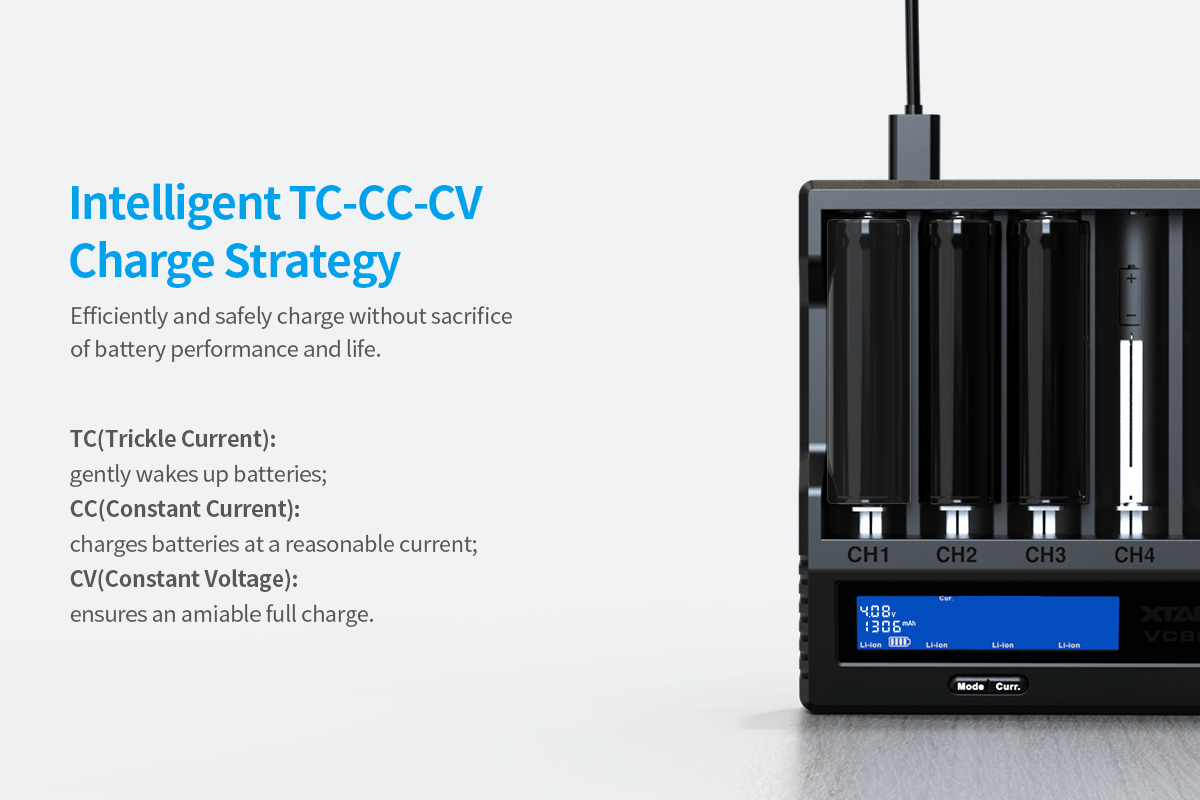
Produkt posiada oznaczenie CE.
- Li-ion batteries 3.6-3.7V, unprotected
- Li-ion batteries 3.6-3.7V, protected (with PCM/PCB)
- Ni-MH batteries
- QC 3.0 (5V/2A | 9V/2A) - USB Type-C Socket
- PD 2.0 (15V/3A), QC3.0 (5V/3A | 9V/2A)
- Processor-controlled TC/CC/CV for Li-ion
- Processor-controlled CC with -ΔV/0ΔV/PVD for Ni-MH
- 2x 3A (only in one of the two extreme channels 1 and 8) 4x 2A / 8x 1A / 8x 0.5A / 8x 0.25A(Po osiągnięciu 2,9V ogniwo ładowane jest stałym prądem o wartości od 0,1A do 1A (zależnie od wykorzystywanego źródła zasilania )
- Li-ion 4.2V ±0,05V
- Reactivation of deeply discharged cells and 0V cells
- Cell capacity measurement
- Against overload / short circuit
- Before reverse polarity of cells
- Charge
- Grade: charge -> discharge -> charge
- Storage - charging for battery storage
- Measurement of internal resistance in mOhm (Quick test)
- Working/Charging Status
- Charging
- Battery voltage
- Charge used to charge the cells
- Internal resistance of cells
- VC8S charger, USB Type-C cable, user manual
- Li-ion batteries 3.6-3.7V, unprotected
- Li-ion batteries 3.6-3.7V, protected (with PCM/PCB)
- Ni-MH batteries
- QC 3.0 (5V/2A | 9V/2A) - USB Type-C Socket
- PD 2.0 (15V/3A), QC3.0 (5V/3A | 9V/2A)
- Processor-controlled TC/CC/CV for Li-ion
- Processor-controlled CC with -ΔV/0ΔV/PVD for Ni-MH
- 2x 3A (only in one of the two extreme channels 1 and 8) 4x 2A / 8x 1A / 8x 0.5A / 8x 0.25A(Po osiągnięciu 2,9V ogniwo ładowane jest stałym prądem o wartości od 0,1A do 1A (zależnie od wykorzystywanego źródła zasilania )
- Li-ion 4.2V ±0,05V
- Reactivation of deeply discharged cells and 0V cells
- Cell capacity measurement
- Against overload / short circuit
- Before reverse polarity of cells
- Charge
- Grade: charge -> discharge -> charge
- Storage - charging for battery storage
- Measurement of internal resistance in mOhm (Quick test)
- Working/Charging Status
- Charging
- Battery voltage
- Charge used to charge the cells
- Internal resistance of cells
- VC8S charger, USB Type-C cable, user manual
